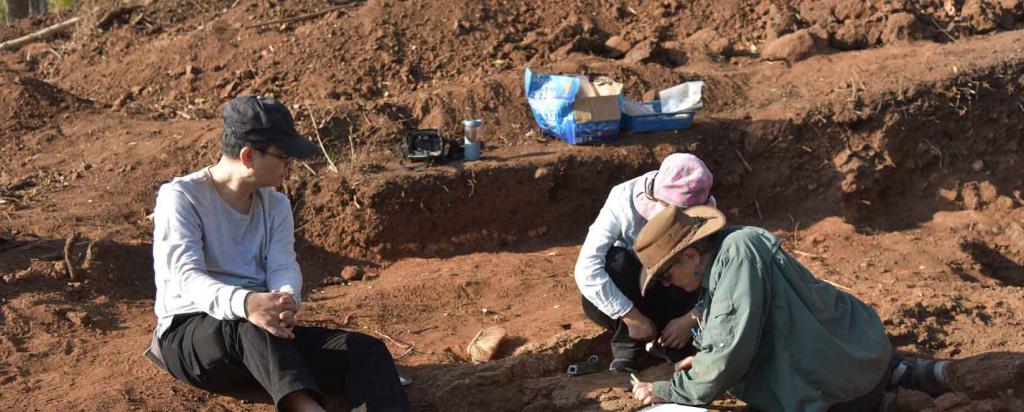
Published on the 11th October 2016 by ANSTO Staff
Radiocarbon dating using accelerator mass spectrometry at ANSTO’s Centre for Accelerator Science has helped reconstruct the history of an ancient Khmer archaeological site in Cambodia.
Dates were determined for nine organic samples that were retrieved from sediment collected from a wet section of a three square kilometre artificial reservoir (known as a baray) at the Preah Khan of Kompong Svay temple complex.
Preah Khan is located about 100 kilometres east of the famous seat of the medieval Khmer kingdom, Angkor. Jungle has now grown over the 22-square kilometre site, a vast peripheral outpost that was the largest single temple compound erected during the Angkorian Empire.
The research at Preah Khan, carried out by investigators from the University of Sydney, University of Illinois Chicago, University of Alberta and ANSTO, was published in the Journal of Archaeological Science: Reports.
Historians and archaeologists believe the road from Preah Khan to Angkor was used to transport iron from the eastern Angkorian Empire. Iron and other metals were needed for the construction of temples, agricultural tools and weapons.
Environmental researcher and radiocarbon expert, Quan Hua used carbon-14 to date organic material including wood fragments and plants.
The radiocarbon chronology together with geoarchaelogical records suggested Preah Khan was established around the 11th century and maintained a small, non-industrial population.
By the mid-to-late 14th century more people occupied Preah Khan and it became increasingly used probably for iron smelting activity. It was utilised episodically for industrial purposes following the decline of Angkor in the mid-15th century.
A member of the research team, Assistant Professor Mitch Henderson from University of Illinois Chicago, is interested in establishing the economic base of the vast Khmer Empire and the role that iron production may have played in its creation and growth.
A new related project is being funded by National Science Foundation in the US.
Hua is expected to join Hendrickson on a field trip for the new project early next year to Phnom Dek, about 27 kilometres east of Preah Khan, where iron production may have been undertaken. “The mountains to the east contain a great deal of iron oxide, and Phnom Dek means Iron Mountain,” said Hua.
Preah Khan may have been the outpost facilitating the movement of iron in and out of the area.
Wood used as the fuel for the furnaces firing the iron would have resulted in chunks of charcoal that were preserved in slag, the waste product of iron production. By dating in-slag charcoal using radiocarbon, chronologies of iron production can be reconstructed.
“The new project will focus on finding evidence of iron production as a proxy, or means to understand the expansion and demise of the Angkorian Empire,” said Hua.
According to historians and archaeologists, at its height between the 11th and 13th centuries, the Khmer Empire extended across much of mainland Asia. The royal court and central administration were located in and around the city of Angkor, the largest pre-industrial city in the world, while other centres and regional settlements developed across their territories. These cities were linked by an extensive road and river transport system. The purpose of the centres varied. Many had civic ceremonial functions but some were industrial or commercial. It is believed that all supplied the central administration with resources.